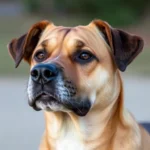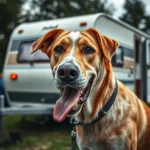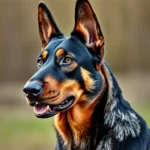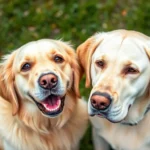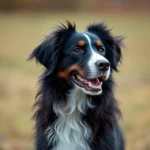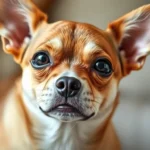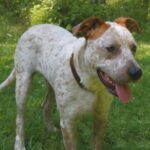
Introduction
Dog breeds play a significant role in human society, not only as companions but also as working partners. Among the various breeds worldwide, Hungarian dog breeds hold a special place due to their rich history and cultural significance. These breeds have evolved alongside the Hungarian people, showcasing unique characteristics that reflect their origins. This article aims to explore various Hungarian dog breeds, highlighting their distinctive traits, history, and suitability as pets.
Historical Background of Hungarian Dog Breeds
Hungary has a long-standing tradition of dog breeding, shaped by its geography, climate, and societal needs. The country’s diverse landscapes, from the plains to the mountains, have influenced the development of various breeds, each suited to different tasks and environments.
Historically, dogs in Hungary have served multiple purposes, from herding livestock to guarding homes and assisting hunters. The Hungarian dog breeds reflect this versatility, demonstrating traits that make them excellent working dogs as well as beloved companions.
Notable historical events have also impacted the evolution of these breeds. Migration and trade brought new influences to Hungary, leading to the development of unique characteristics. Additionally, changes post-World War II, including shifts in agricultural practices, affected the popularity and breeding of certain breeds.
Popular Hungarian Dog Breeds
Vizsla
The Vizsla is perhaps the most well-known of the Hungarian dog breeds. Originating in Hungary, this breed has a history dating back to the 10th century, known for its exceptional hunting abilities.
Origin and History
The Vizsla was bred by the Magyar tribes for hunting and retrieving game. Over time, they became popular among nobles and hunters, valued for their agility and keen sense of smell.
Physical Characteristics
Vizslas are medium-sized dogs with a sleek, athletic build. Their short, rust-colored coats are not only beautiful but also easy to maintain.
Temperament and Personality Traits
Known for their affectionate nature, Vizslas are loyal and energetic dogs. They thrive on human interaction and are known to be good with children, making them excellent family pets.
Care Requirements and Health Concerns
Regular exercise is crucial for Vizslas, as they are high-energy dogs. Potential health concerns include hip dysplasia and certain skin conditions. Regular vet check-ups and a balanced diet can help maintain their health.
Best Suited For
Vizslas are ideal for active families and individuals who can provide ample exercise and companionship.
Komondor
The Komondor is a distinctive breed known for its unique corded coat, which serves as a natural protection against harsh weather and predators.
Origin and History
This breed has roots in the ancient nomadic tribes of Hungary, where they were used for guarding livestock. Their impressive size and strength make them formidable protectors.
Unique Coat and Grooming Needs
The Komondor’s long, corded coat requires regular grooming to prevent matting. While their coat is resistant to dirt and water, it needs to be washed and dried thoroughly to maintain its health.
Temperament and Personality Traits
Komondors are known for their calm and protective nature. They tend to be loyal to their families but can be wary of strangers, making them excellent watchdogs.
Care Requirements and Health Concerns
Regular exercise is essential, but Komondors do not require as much activity as other breeds. They may be prone to hip dysplasia and certain genetic conditions, so routine veterinary care is important.
Best Suited For
These dogs are best suited for rural settings where they can perform their guarding duties effectively.
Kuvasz
The Kuvasz is another breed with a rich history, traditionally used for guarding livestock in Hungary.
Origin and History
Dating back to the Middle Ages, the Kuvasz was highly valued by noble families for its protective instincts and loyalty.
Physical Characteristics and Size
This breed is large, with a strong, muscular build and a thick, white coat that helps protect it from harsh weather.
Temperament and Personality Traits
Kuvasz dogs are known for their independence and intelligence. They tend to be affectionate with their families but can be reserved with strangers.
Care Requirements and Health Concerns
Regular grooming is necessary to keep their coat in good condition. Potential health issues include hip dysplasia and certain skin conditions, so proactive veterinary care is essential.
Best Suited For
The Kuvasz thrives in active environments, making them suitable for families who can provide ample space and exercise.
Puli
The Puli is a unique breed, easily recognizable by its distinctive corded coat, similar to that of the Komondor but smaller in size.
Origin and History
The Puli has a history as a herding dog, used by Hungarian shepherds for centuries. Their agility and intelligence made them invaluable for managing livestock.
Distinctive Coat and Grooming Habits
The Puli’s coat requires regular grooming to maintain its corded appearance. While it is resistant to dirt and water, it needs regular cleaning to avoid matting.
Temperament and Personality Traits
Pulis are energetic, intelligent, and eager to please. They are known for their playful nature and are excellent companions for active families.
Care Requirements and Health Concerns
These dogs need regular exercise and mental stimulation to thrive. They can be prone to hip dysplasia and other health issues, so regular veterinary checks are recommended.
Best Suited For
Pulis are ideal for active owners who enjoy outdoor activities and may be interested in agility training.
Mudi
The Mudi is a lesser-known breed that showcases the versatility of Hungarian dog breeds.
Origin and History
Developed in Hungary as a herding dog, the Mudi is known for its intelligence and adaptability. It has been used for various tasks, including herding, guarding, and even as a companion.
Versatility as a Herding Dog
Mudis are agile and quick, making them exceptional herding dogs. Their ability to adapt to various tasks has made them popular among farmers.
Temperament and Personality Traits
Mudis are known for their energetic and intelligent nature. They are loyal and protective of their families, making them excellent companions.
Care Requirements and Health Concerns
Regular exercise is essential for this breed, along with mental stimulation to prevent boredom. Potential health concerns include hip dysplasia and certain eye conditions.
Best Suited For
Mudis are best suited for active families and those who engage in outdoor activities or work on farms.
Characteristics of Hungarian Dog Breeds
Across the spectrum of Hungarian dog breeds, several common traits can be observed.
Common Traits Across Hungarian Breeds
-
Intelligence and Trainability: Many Hungarian breeds are known for their intelligence, making them relatively easy to train. They often excel in obedience and agility training.
-
Temperament Variations: While some breeds, like the Vizsla and Puli, are friendly and sociable, others, like the Komondor and Kuvasz, may be more reserved and protective. Understanding breed-specific temperaments is essential for potential owners.
-
Physical Attributes: Hungarian breeds vary in size and coat type. From the sleek Vizsla to the massive Komondor, there is a breed to fit various preferences and lifestyles.
Differences Between Working and Companion Breeds
Some Hungarian dog breeds are primarily working dogs, such as the Komondor and Kuvasz, which excel in guarding and herding roles. In contrast, others, like the Vizsla and Puli, make excellent companions due to their affectionate nature and high energy levels. Understanding these distinctions can help potential owners choose the right breed for their needs.
Training and Socialization Tips
Training and socialization are crucial for all dog breeds, but particularly so for Hungarian dog breeds, which may have strong protective instincts.
Importance of Early Socialization
Introducing dogs to various environments, people, and other animals during their early stages is essential. Early socialization helps prevent behavioral issues and builds confidence in Hungarian breeds, which can be wary of strangers.
Recommended Training Techniques for Hungarian Breeds
Positive reinforcement is highly effective with Hungarian dog breeds. Using treats, praise, and playtime encourages desired behaviors. Consistency is key; establishing a routine helps these intelligent breeds learn more effectively.
Common Behavioral Issues and How to Address Them
Some Hungarian dog breeds may exhibit separation anxiety or stubbornness if not properly trained. Addressing these issues through regular exercise, mental stimulation, and consistent training can mitigate problems.
Health Considerations
Maintaining the health of Hungarian dog breeds requires attention to common health issues and preventive care.
Common Health Issues in Hungarian Dog Breeds
Many Hungarian breeds may be prone to certain health conditions, including:
- Hip dysplasia
- Skin conditions
- Eye problems
Regular Care and Preventive Measures
Routine veterinary check-ups and vaccinations are essential for all dogs. Regular exercise, a balanced diet, and mental stimulation contribute to overall health and well-being.
Importance of Veterinary Check-Ups
Regular visits to the veterinarian help catch any potential health issues early. Maintaining a good relationship with a vet familiar with Hungarian dog breeds can provide valuable insights into breed-specific health concerns.
Living with a Hungarian Dog Breed
Understanding the living conditions and needs of Hungarian dog breeds is vital for ensuring a happy and healthy life.
Ideal Living Conditions for Various Breeds
While some breeds like the Vizsla and Puli thrive in active households with ample space, others like the Komondor and Kuvasz may prefer rural settings where they can fulfill their guarding roles effectively.
Exercise and Activity Needs
Most Hungarian dog breeds require regular exercise to stay physically and mentally fit. Daily walks, playtime, and activities like agility training can help satisfy their needs.
Compatibility with Children and Other Pets
Many Hungarian breeds, particularly the Vizsla and Puli, are known for their friendly nature and compatibility with children. However, like all breeds, early socialization and proper introductions are crucial for harmonious relationships with other pets.
Conclusion
The unique qualities of Hungarian dog breeds make them remarkable companions and working partners. Each breed offers distinct characteristics and traits that cater to various lifestyles and preferences. When selecting a breed, potential owners should consider their living conditions, activity level, and family dynamics. By understanding the needs and characteristics of these breeds, one can make an informed decision and promote responsible ownership. Embracing the rich heritage and personality of Hungarian dog breeds can lead to rewarding companionship and a deeper appreciation of these remarkable animals.

